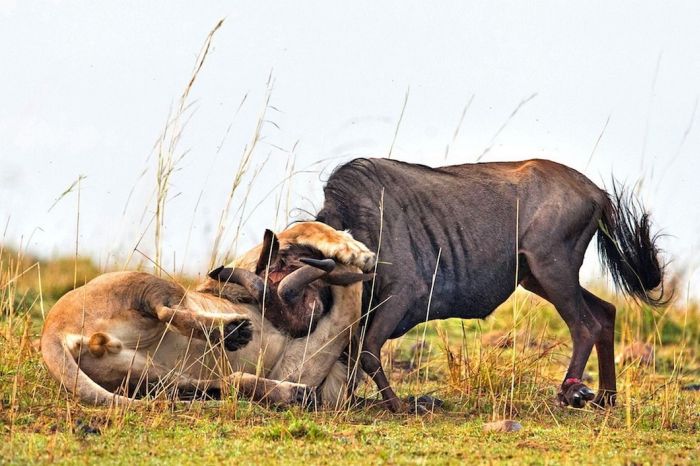|
|
Lion Against A Wildebeast
|
The black wildebeest has been classified as of "Least Concern" by the International Union for Conservation of Nature (IUCN), in its Red List of Threatened Species. The populations of this species are on an increase. There are now believed to be more than 18,000 individuals, 7,000 of which are in Namibia, outside its natural range, and where it is farmed. Around 80% of the wildebeest occur in private areas, while the other 20% are confined in protected areas. Its introduction into Namibia has been a success and numbers have increased substantially there from 150 in 1982 to 7,000 in 1992.
The blue wildebeest has also been rated as being of "Least Concern". The population trend is stable, and their numbers are estimated to be around 1,500,000 - mainly due to the increase of the populations in Serengeti National Park (Tanzania) to 1,300,000. However, the numbers of one of the subspecies, the Eastern white-bearded wildebeest (C. t. albojubatus) have seen a steep decline. Population density ranges from 0.15/sq. km. in Hwange and Etosha National Parks to 35/sq. km. in Ngorongoro Crater and Serengeti National Park.
|
|









